Moniek Bloks's Blog, page 93
December 29, 2022
Royal Jewels – The South Africa Necklace and Bracelet
The then Princess Elizabeth received the necklace as a gift from the Government of the Union of South Africa for her 21st birthday.
The necklace originally consisted of a long chain of 21 graduated brilliants, each separated by a baguette and two small brilliants. The necklace was presented to her in this state by Field Marshal Smuts at a ball held at Government House in Cape Town during her parents’ tour of South Africa. She was later also presented with a single 6-carat stone which was used to make a detachable snap-piece.
Embed from Getty ImagesEmbed from Getty ImagesThe necklace was on display with the rest of her wedding gifts in 1947 at St James’s Palace. Five years later, the necklace was shortened to 15 stones, and the bracelet was created from the six stones that were removed.1
The post Royal Jewels – The South Africa Necklace and Bracelet appeared first on History of Royal Women.
Royal Jewels – Queen Elizabeth II’s South Africa Necklace and Bracelet
The then Princess Elizabeth received the necklace as a gift from the Government of the Union of South Africa for her 21st birthday.
The necklace originally consisted of a long chain of 21 graduated brilliants, each separated by a baguette and two small brilliants. The necklace was presented to her in this state by Field Marshal Smuts at a ball held at Government House in Cape Town during her parents’ tour of South Africa. She was later also presented with a single 6-carat stone which was used to make a detachable snap-piece.
Embed from Getty ImagesEmbed from Getty ImagesThe necklace was on display with the rest of her wedding gifts in 1947 at St James’s Palace. Five years later, the necklace was shortened to 15 stones, and the bracelet was created from the six stones that were removed.1
The post Royal Jewels – Queen Elizabeth II’s South Africa Necklace and Bracelet appeared first on History of Royal Women.
December 27, 2022
Review: The Majestic Life of Queen Elizabeth II
Netflix has its fair share of royal documentaries, and The Majestic Life of Queen Elizabeth II is just one of them. It is also known as Queen Elizabeth II – The Diamond Celebration.
The future Queen Elizabeth II was born in 1926 as the eldest daughter of the future King George VI and Queen Elizabeth. She became Queen at the age of just 25 in 1952, upon the early death of her father. The documentary dates from 2012/2013 and is an hour and 30 minutes long. It documents Queen Elizabeth’s reign and the challenges she faced. It features quite a few familiar faces as experts, such as Ingrid Seward, Robert Lacey and Hugo Vickers.
Despite the excellent length, The Majestic Life of Queen Elizabeth II stays rather on the surface and shies away from the harder subjects. This perhaps has something to do with its release around the Diamond Jubilee celebrations but leaves one feeling rather meh about the whole thing. For some reason, maybe because she is still alive, there aren’t many documentaries that dare to dig a little deeper. But, overall, it’s a nice documentary if you’re just getting started with getting to know the monarchy, and there weren’t any obvious mistakes that jumped out at me.
You can watch the documentary here.The post Review: The Majestic Life of Queen Elizabeth II appeared first on History of Royal Women.
December 25, 2022
Sudeley Castle – The last home of Catherine Parr
Although a residence existed on the site from around the 11th century, the building of the current Sudeley Castle was begun in the 15th century by Ralph Boteler. However, he was compelled to sell Sudeley to the Crown after he fell out of favour, and the castle was then granted to Richard, Duke of Gloucester (later King Richard III), who used it as a base before the Battle of Tewkesbury.
Click to view slideshow.He probably had the banqueting hall built. This now lies largely in ruins and is part of the gardens. After Richard’s death in battle, the property was transferred to King Henry VII, who granted it to his uncle Jasper Tudor. King Henry VIII and Queen Anne Boleyn stayed at the castle once – in 1535. Following the accession of King Edward VI, his maternal uncle Edward became Lord Protector of the Realm, while his other maternal uncle Thomas was created Baron Seymour of Sudeley. A few months into his reign, his father’s widow Catherine Parr remarried Thomas. This happened in secret and caused a bit of a scandal.
In 1548, Catherine Parr found herself pregnant for the first time (having been married three times before), and she moved with her husband to Sudeley Castle. Tragically, she would die there on 5 September 1548, shortly after giving birth to a daughter named Mary, who probably died in infancy. Two days later, Catherine was buried at St. Mary’s Church, which stands on the grounds of Sudeley Castle.
Click to view slideshow.Over the years, her tomb suffered damage, and the location was even lost. Her coffin was discovered in 1782, and in 1817 her remains were placed in a stone vault. The chapel was restored in 1863, and Catherine’s remains were then placed in a tomb designed by George Gilbert Scott. It is a life-sized effigy under a canopy of carved marble.
Following the English Civil War, the castle was left largely in ruins though it was lived in. It was saved in 1837 when the brothers Dent purchased it. They partially restored, and it is still owned by the Dent family today. Parts of the castle are open to the public, as is St Mary’s Church, and it is largely dedicated to Catherine Parr.
Click to view slideshow.Sudeley Castle is a wonderful place with great and enthusiastic staff. When they learned I was from the Netherlands, I was shown a bust of William the Silent above the door to the private quarters and a window with an old Dutch saying. What a wonderful personal touch.
The castle can be a little difficult to reach by public transport. I ended up taking a coach from London Victoria to Cheltenham before having a taxi take me the rest of the way to the castle. Parking for cars is available.
In addition, the shop has some lovely merchandise and awesome staff, and there’s also a cafe on site.
Plan your visit here.
The post Sudeley Castle – The last home of Catherine Parr appeared first on History of Royal Women.
December 23, 2022
The birth of the future Empress Elisabeth
In 1837, Princess Ludovika was pregnant for the fourth time. Her marriage to Duke Maximilian Joseph in Bavaria was in shambles, but that didn’t stop the regular arrival of new babies. Her first child Ludwig Wilhelm was born in 1831, followed by the short-lived Wilhelm Karl in 1832 and Helene in 1834.
On 24 December, Ludovika was planning to spend the evening with her mother, Caroline, when she suddenly went into labour at the Herzog-Max-Palais in Munich. The birth happened quickly, and the little one was born with one milk tooth, which was considered to be a good omen. Even more importantly, the newborn appears to be healthy. Just two days later, she was baptized as Elisabeth Amalie Eugenie. The godmothers were Ludovika’s sisters, the twins Elisabeth, later Queen of Prussia and Amalie, later Queen of Saxony, as well as Ludovika’s niece Eugénie de Beauharnais who held the child as she was being baptized. Unfortunately, Elisabeth’s father was not present, and when she was just one month old, he set out for a long journey to Egypt.
He came home just after their tenth wedding anniversary, and Ludovika soon found herself pregnant again. On 9 August 1839, Ludovika gave birth to a third – but second surviving – son at Possenhofen. He was named Karl Theodor. On 4 October 1841, she gave birth to another daughter – named Marie Sophie. Shortly after the birth, it became apparent that Ludovika’s mother, Caroline, was dying. Ludovika and her children travelled to Munich as soon as she was able and she was so shocked by her mother’s appearance that she herself fell ill. On 13 November 1841, Caroline died surrounded by her family. Once again, Ludovika’s husband was nowhere to be found when she needed him.
In 1843, Ludovika found herself pregnant once more. On 30 September 1843, Ludovika gave birth to a daughter named Mathilde Ludovika. Ludovika’s eighth pregnancy ended in the stillbirth of a son on 8 December 1845. On 22 February 1847, she gave birth to her ninth child – a daughter named Sophie Charlotte. Her tenth and final pregnancy ended on 7 December 1849 with the birth of a healthy son named Maximilian Emanuel. Ludovika was now 41 years old, and she had spent the better part of her married life in continuous pregnancies. It was a miracle that she had survived.
In the spring of 1848, Ludovika took Helene, Elisabeth and Karl Theodor to Tyrol to visit her sister Archduchess Sophie. It would be the first time that Elisabeth would set foot on Austrian soil. It was a difficult time in Austria, with uprisings and rebellions eventually leading to the abdication of the Emperor and the accession of Franz Joseph in December.
Elisabeth was a shy child, and she had grown up in the nature of the Castle of Possenhofen. There was very little official court protocol in place, and she enjoyed horse riding, fishing and mountain climbing. Her playmates were not only her own siblings but also the children of the local peasants. She was not considered the beauty of the family – that honour went to her sister Helene. An English woman named Mary Newbold had been appointed as a governess for Helene and Elisabeth around 1840. This could explain why the two women were so proficient in English and often used the language to communicate. Luise von Wulffen later took on Elisabeth, while Luise’s sister Wilhelmina later took on Helene. There was also a tutor who taught all the children music, and he taught the boys Greek and Latin. In early 1850, the von Wulffen sisters left Ludovika’s service, and she went on the hunt for new governesses.
She chose Amalie Tänzl von Tratzberg, who took up her position in November 1851 as the governess for Marie Sophie, Mathilde Ludovika and Sophie Charlotte. For Elisabeth, she settled on Camilla, Countess von Otting-Fünfstetten. She was a relative, and she and Ludovika shared a grandfather in Frederick Michael, Count Palatine of Zweibrücken. She later wrote about Camilla, “Things are going quite well with Camilla Otting so far; Sisi is growing fond of her; she is very well-mannered and well-educated. She is very lively […] has pleasant conversation. […] I hope that she will be useful to my daughters, but she is so young and looks so young that I cannot let her go out alone except in the garden.”1 Elisabeth’s niece Amelie later wrote, “From her, I think we all inherited a great love of the outdoors, from the woods to the meadows, to spending time in the fresh air to hours of walking.”2
From her mother, Elisabeth inherited a love of animals. When she was 11, Ludovika gave her two lambs, which became so tame that they followed Elisabeth everywhere. At the age of 15, she had her first riding lesson, and she later wrote to her former governess, “You can imagine how much we are delighted about this. Although I have only had three lessons, I have already ridden three horses, and from now on, I am allowed to ride on Lady.”3
When Elisabeth returned home in 1853 as the Emperor’s fiance, she was set to undergo an intense course of study. She would need to transform into a woman worthy of becoming an Empress.
The post The birth of the future Empress Elisabeth appeared first on History of Royal Women.
Book News January 2023

The Beauforts: Lineage, Ambition and Obligation 1373-1510
Hardcover – 15 September 2022 (UK) & 15 January 2023 (US)
Four bastard children of John of Gaunt and his mistress Katherine Swynford vigorously made their way in the world despite their questionable origin, and when all four were retrospectively declared legitimate they were each set on course for advancement. Following the coup in 1399 when their half-brother became King Henry IV, the Beauforts were placed at the centre of government, and for three generations they served the Lancastrian monarchy in its grandiose ambitions, and in its decline to eventual extinction.
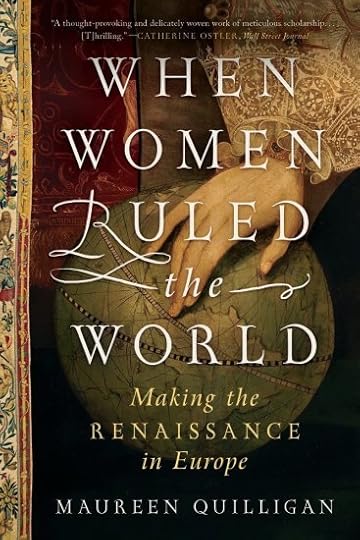
When Women Ruled the World: Making the Renaissance in Europe
Paperback – 6 December 2022 (US) & 6 January 2023 (UK)
The sixteenth century in Europe was a time of chronic destabilization in which institutions of traditional authority were challenged and religious wars seemed unending. Yet it also witnessed the remarkable flowering of a pacifist culture, cultivated by a cohort of extraordinary women rulers―most notably, Mary Tudor; Elizabeth I; Mary, Queen of Scots; and Catherine de’ Medici―whose lives were intertwined not only by blood and marriage, but by a shared recognition that their premier places in the world of just a few dozen European monarchs required them to bond together, as women, against the forces seeking to destroy them, if not the foundations of monarchy itself.
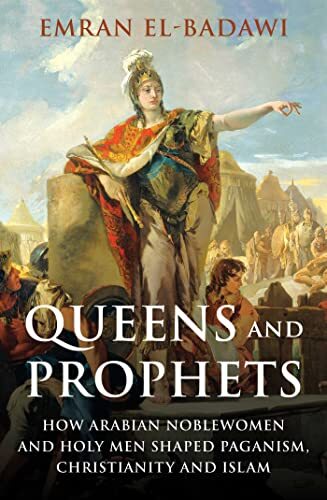
Queens and Prophets: How Arabian Noblewomen and Holy Men Shaped Paganism, Christianity and Islam
Hardcover – 10 January 2023 (US) & 1 December 2022 (UK)
Arab noblewomen of late antiquity were instrumental in shaping the history of the world. Between Rome’s intervention in the Arabian Peninsula and the Arab conquests, they ruled independently, conducting trade and making war. Their power was celebrated as queen, priestess and goddess. With time some even delegated authority to the most important holy men of their age, influencing Arabian paganism, Christianity and Islam.

Charlene: In Search of a Princess
Paperback – 5 January 2023 (UK) & 14 March 2023 (US)
Journalist Arlene Prinsloo sifts fact from fiction in this revealing unauthorised biography of Her Serene Highness Princess Charlene.
Prinsloo traces her life from humble beginnings in Zimbabwe, Johannesburg and Durban to the Olympic Games, her jet-set romance with the bachelor prince, the fairy-tale wedding and becoming a mother to twins. At its heart, it’s the story of a woman is search of happiness for herself and her family – and also of the beginning of Charlene defining her own space amid the royal protocol.

The Times Queen Elizabeth II: Commemorating her life and reign 1926 – 2022
Hardcover – 31 January 2023 (US) & 27 October 2022 (UK)
Drawn from nearly a century of detailed and fascinating reporting by The Times, discover insights and memories of the extraordinary period of social change that was our nation’s second Elizabethan age. Featuring Queen Elizabeth’s obituary, as published in The Times Reflections of a nation in mourning, with images from the state funeral A collection of essays and articles written by leading royal historians, including Ben Macintyre, Hugo Vickers, Valentine Low and Professor Kate Williams.
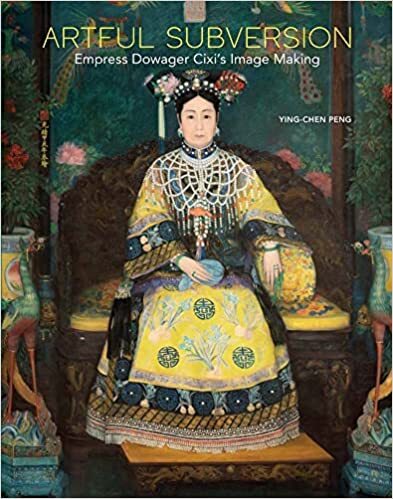
Artful Subversion: Empress Dowager Cixi’s Image Making
Hardcover – 24 January 2023 (US) & 14 February 2023 (UK)
Empress Dowager Cixi (1835–1908), who ruled China from 1861 until her death in 1908, is a subject of fascination and controversy, at turns vilified for her political maneuvering and admired for modernizing China. In addition to being an astute politician, she was an earnest art patron, and this beautifully illustrated book explores a wide range of objects, revealing how the empress dowager used art and architecture to solidify her rule.
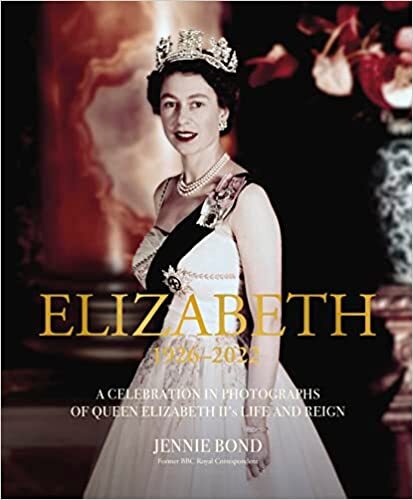
Elizabeth: A Celebration in Photographs of Elizabeth II’s Life & Reign
Hardcover – 10 January 2023 (US) & 24 November 2022 (UK)
Elizabeth: A Celebration in Photographs, looks at this remarkable period in the history of Britain’s monarchy in lavish and fascinating detail, featuring over 250 photographs. Constantly under scrutiny the entire time she was on the throne, this book presents a balanced and absorbing account of the Queen’s life and of her role as the head of state in a country and a world that have changed almost beyond recognition in the seventy years she held the throne.
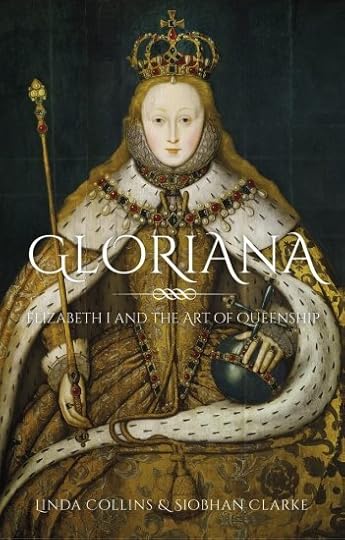
Gloriana: Elizabeth I and the Art of Queenship
Hardcover – 1 January 2023 (US) & 16 June 2022 (UK)
Sumptuously illustrated, Gloriana tells the story of Elizabethan art as a powerful device for royal magnificence and propaganda. By illuminating several key artworks of Elizabeth’s reign, Linda Collins and Siobhan Clarke create a unique portrait of the Tudor monarch as she has never been seen before.

Unsteady Crowns: Why the World’s Monarchies are Struggling for Survival
Paperback – 1 January 2023 (US)
In Unsteady Crowns, historian A.W. Purdue explores the important role played by monarchies as agents of continuity, guarding and representing the national ethos, and brings the story up to date in a fully revised second edition, exploring the roles of celebrity, rivalry, and much more in monarchies worldwide.

In Search of Amrit Kaur: An Indian Princess in Wartime Paris
Kindle Edition – 12 January 2023 (US & UK)
Filled with glamour and terror, beauty and sorrow, In Search of Amrit Kaur is an engrossing detective story, a kaleidoscopic history lesson, and a moving portrait of mothers, lovers and daughters across the century, seeking personal freedom.

Hitler’s Spy Princess: The Extraordinary Life of Stephanie von Hohenlohe
Paperback –1 January 2023 (US)
She was the unofficial go-between for some of the most important people of the era, conveying secret messages and organizing meetings between Adolf Hitler, Lord Rothermere, the Duke and Duchess of Windsor and more than one US president. She would even be one of only a handful of women to be awarded the Nazi Party’s Gold Medal for ‘outstanding service to the National Socialist movement’. But then the Second World War began, and everything changed.
Hitler’s Spy Princess is a tale of lovers and manipulation, cleverness and deceit in the remarkable life of the woman Hitler called his ‘dear princess’.
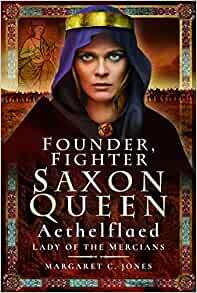
Founder, Fighter, Saxon Queen: Aethelflaed, Lady of the Mercians
Paperback – 30 January 2023 (UK) & 30 March 2023 (US)
Alfred the Great’s daughter defied all expectations of a well-bred Saxon princess. The first Saxon woman ever to rule a kingdom, Aethelflaed, Lady of the Mercians, led her army in battle against Viking invaders. She further broke with convention by arranging for her daughter to succeed her on the throne of Mercia. To protect her people and enable her kingdom in the Midlands to prosper, Aethelflaed rebuilt Chester and Gloucester, and built seven entirely new English towns. In so doing she helped shape our world today. This book brings Aethelflaed’s world to life, from her childhood in time of war to her remarkable work as ruler of Mercia. The final chapter traces her legend, from medieval paintings to novels and contemporary art, illustrating the impact of a legacy that continues to be felt to this day.
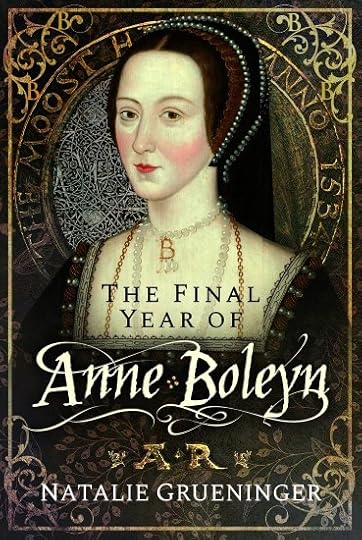
The Final Year of Anne Boleyn
Hardcover – 30 November 2022 (UK) & 30 January 2023 (US)
There are few women in English history more famous or controversial than Queen Anne Boleyn. She was the second wife of Henry VIII, mother of Elizabeth I and the first English queen to be publicly executed. Much of what we think we know about her is coloured by myth and legend, and does not stand up to close scrutiny. Reinvented by each new generation, Anne is buried beneath centuries of labels: homewrecker, seductress, opportunist, witch, romantic victim, Protestant martyr, feminist. In this vivid and engaging account of the triumphant and harrowing final year of Queen Anne Boleyn’s life, the author reveals a very human portrait of a brilliant, passionate and complex woman.

Embroidering Her Truth: Mary, Queen of Scots and the Language of Power
Paperback – 19 January 2023 (UK) & 30 May 2023 (US)
In sixteenth-century Europe women’s voices were suppressed and silenced. Even for a queen like Mary, her prime duty was to bear sons. In an age when textiles expressed power, Mary exploited them to emphasise her female agency. From her lavishly embroidered gowns as the prospective wife of the French Dauphin to the fashion dolls she used to encourage a Marian style at the Scottish court and the subversive messages she embroidered in captivity for her supporters, Mary used textiles to advance her political agenda, affirm her royal lineage and tell her own story.

Henry VIII’s Imprisoned Women: The Women of the Tower
Hardcover – 30 January 2023 (UK) & 30 March 2023 (US)
The stories of women, including Henry’s two queens, who were persecuted, condemned and ultimately executed will be explored in this book. Alice Tankerville, the first woman to escape the infamous Tower of London, albeit for a short while; Elizabeth Barton, The Nun of Kent and the only woman to be dealt the dishonour of having her head spiked on London Bridge; Queen Anne Boleyn, whose fall was as tragically spectacular as her rise to fame; Margaret Pole, the last living Plantagenet princess who was denounced as a traitor and met a merciless end in her twilight years; Queen Katheryn Howard, whose daring yet seemingly foolish decisions ultimately led to her downfall; and finally, Anne Askew, the brave Protestant who gained infamy as the only woman to be racked at the Tower. Through the lives of these women, we will get a glimpse into the reign of the capricious monarch who changed the face of England forever.

Camilla: From Outcast to Queen Consort
Paperback – 7 February 2023 (US) & 10 January 2023 (UK)
A compelling new biography of Camilla, Queen Consort, that reveals how she transformed her role and established herself as one of the key members of the royal family.
The post Book News January 2023 appeared first on History of Royal Women.
December 22, 2022
Royal Jewels – Queen Elizabeth II’s Nizam of Hyderabad Necklace
The then Princess Elizabeth received the Nizam of Hyderabad necklace as a wedding present by the Nizam of Hyderabad, together with a tiara.
The Nizam, who did not come over for the wedding itself, gave instructions to Cartier that Princess Elizabeth could choose whatever she wanted. The necklace she picked originally came into Cartier’s stock in 1935 with a central pendant of three drops flanked on each side by two pendants of two drops. Nine of these drops were eventually removed and sold separately, The necklace was sold in 1936 before being repurchased by Cartier in 1937. It remained with them until the Nizam purchased it for Princess Elizabeth.
At some point, several collets were removed.
It was described as having a “pave-set centre with a detachable double-drop pendant incorporating 13 emerald-cut diamonds and a pear-shaped drop; the chain of 38 brilliant-cut open-back collets with an elongated oval brilliant-set snap.”1
Embed from Getty ImagesQueen Elizabeth II wore it frequently in the early years of her reign. In 2014, it was worn by the then Duchess of Cambridge – now the Princess of Wales. She wore it again in 2019 for the Diplomatic Corps Reception.
Embed from Getty ImagesEmbed from Getty ImagesThe post Royal Jewels – Queen Elizabeth II’s Nizam of Hyderabad Necklace appeared first on History of Royal Women.
December 20, 2022
Princess Shouning – The Ming Dynasty Princess who was bullied by her servant
During the Ming Dynasty, it was a rule that a princess must marry a commoner. A husband from a commoner family was believed to treasure and cherish a princess more than a man of noble status and wealth.[1] In Princess Shouning’s case, this belief proved to be true. Princess Shouning was the favourite daughter of Emperor Shengzong of the Ming Dynasty. Emperor Shengzong chose a good husband for her. Her husband, Ran Xingrang, loved and cherished her.[2] However, their marriage obligated them to follow the strict rules established for a princess of the Ming dynasty.[3] The married princess was often assigned a female steward who was to supervise the princess and her husband. Often these female stewards were corrupt and abused their power.[4] Princess Shouning and Ran Xingrang were often bullied by the female steward assigned to her.[5] This led to extreme mistreatment and injustice that the couple were forced to endure.
Princess Shouning was born in 1592 C.E. Her real name was Zhu Xuanwei. She was the seventh daughter of Emperor Shenzong of the Ming dynasty (also known as the Wanli Emperor). Her mother was the infamous Zheng Guifei. She was Emperor Shenzong’s favourite daughter.[6]
In 1609 C.E., Emperor Shenzong made Zhu Xuanwei the Princess of Shouning. He also decided that it was time for Princess Shouning to get married. As was customary for the princesses of the Ming dynasty, the husband must come from a commoner family in “Beijing, Shandong, Shanxi, or Hebei.” [7] This is because it was believed that a commoner would love and cherish a Ming dynasty princess more than a man of nobility and wealth.[8] The potential husband also must be around thirteen to fifteen years of age and have a Confucian education.[9] Based on these qualifications, the imperial court selected three suitable men to be Princess Shouning’s prospective bridegroom.[10]
Emperor Shenzong inspected the three suitors to see who was the most suitable for his beloved daughter. As soon as the candidates walked into the audience chamber, Emperor Shenzong immediately noticed that two of the candidates had worn fancy clothes and behaved in a pompous manner.[11] He noticed that the third candidate had worn a humble hat and kept his eyes lowered.[12] Emperor Shenzong was impressed.[13] He chose this candidate to be Princess Shouning’s husband. His name was Ran Xingrang.
Emperor Shenzong gave Princess Shouning and Ran Xingrang a big wedding and bestowed on her a lavish dowry consisting of generous amounts of land, which was more than all the other Ming Dynasty princesses had ever received.[14] He even allowed her to visit the palace every five days.[15] The two were very happy with each other and fell deeply in love.[16] However, the two newlyweds were bound by the rules established for Ming dynasty princesses.[17] Princess Shouning was under strict supervision by her steward named Liang Yingnu.[18] One night, Princess Shouning defied protocol by summoning her husband.[19] Ran Xingrang immediately went to his wife’s quarters to visit her but was stopped by Liang Yingnu.[20] Liang Yingnu had been drinking with her eunuch husband, Zhao Jinchao, when Ran Xingrang had arrived unexpectedly at her ward’s quarters.[21] Ran Xingrang did not even bother to greet her.[22] Therefore, she hit Ran Xingrang in anger and chased him away from Princess Shouning’s quarters.[23]
Princess Shouning was deeply upset at how Liang Yingnu treated her husband.[24] She complained to her mother, Zheng Guifei, but she was too late. Zheng Guifei had already heard the story from her steward and believed that Ran Xingrang was in the wrong.[25] Princess Shouning could not do anything for her husband. Ran Xingrang decided to make a formal complaint to the Emperor.[26]
Once Ran Xingrang arrived at the palace, he was beaten by the palace eunuchs who were acting under Zhao Jinchao’s orders.[27] Ran Xingrang was badly beaten and was covered in blood. He had no choice but to flee the palace.[28] Ran Xingrang’s absence gave the opportunity for Liang Yingnu to tell her side of the story to Emperor Shenzong. Emperor Shenzong believed that Ran Xingrang was also in the wrong.[29] He punished him by sentencing him to three months of moral training to reflect upon his actions.[30] Emperor Shenzong did reassign another steward, but he let Zhao Jinchao remain in the princess’s mansion.[31]
After the incident, very little is known about Princess Shouning.[32] She attended court audiences with her siblings until the death of her father. She did have a happy marriage with Ran Xingrang. The couple had one son.[33] On 13 August 1634 C.E., Princess Shouning died at the age of forty-two. Princess Shouning was blessed with marrying a loving husband whom her father had chosen for her. Yet, she was bound by the rules of a Ming dynasty princess. She did not have the freedom to be with her husband whenever she wished. She was under constant supervision. Princess Shouning’s story shows that it was not easy to be a princess of the Ming dynasty. It also shows how difficult it was to be the princess’s husband. Yet, the couple was able to overcome these difficulties. They were able to have a happy and satisfying marriage.[34]
Sources:
iMedia. (n. d.). “The princess of the Ming Dynasty and her husband were bullied by their subordinates and failed to jointly defend their rights. Why can’t they win the battle?”. Retrieved on 27 August 2022 from https://min.news/en/featured/75a760bd....
iMedia. (n. d.). “The princess of the Ming Dynasty: Even though she was born in Tianhuang, she was inevitably fateful”. Retrieved on 27 August 2022 from https://min.news/en/history/d789b6687....
Laitimes. (4 January 2022). “The most miserable pony in history. What to do but liang mamma agree, who is Mamma Liang?”. Retrieved on 27 August 2022 from https://www.laitimes.com/en/article/1....
McMahon, K. (2016). Celestial Women: Imperial Wives and Concubines in China from Song to Qing. NY: Rowman & Littlefield Publishers.
[1] McMahon, 2016
[2] Laitimes, 4 January 2022, “The most miserable pony in history. What to do but liang mamma agree, who is Mamma Liang?”
[3] iMedia, n. d., “The princess of the Ming Dynasty and her husband were bullied by their subordinates and failed to jointly defend their rights. Why can’t they win the battle?”
[4] iMedia, n. d., “The princess of the Ming Dynasty and her husband were bullied by their subordinates and failed to jointly defend their rights. Why can’t they win the battle?”
[5] iMedia, n. d., “The princess of the Ming Dynasty and her husband were bullied by their subordinates and failed to jointly defend their rights. Why can’t they win the battle?”
[6] iMedia, n. d., “The princess of the Ming Dynasty and her husband were bullied by their subordinates and failed to jointly defend their rights. Why can’t they win the battle?”
[7] iMedia, n. d., “The princess of the Ming Dynasty: Even though she was born in Tianhuang, she was inevitably fateful”, para. 2
[8] McMahon, 2016
[9] McMahon, 2016
[10] McMahon, 2016
[11] McMahon, 2016
[12] McMahon, 2016
[13] McMahon, 2016
[14] iMedia, n. d., “The princess of the Ming Dynasty: Even though she was born in Tianhuang, she was inevitably fateful”
[15] iMedia, n. d., “The princess of the Ming Dynasty: Even though she was born in Tianhuang, she was inevitably fateful”
[16] Laitimes, 4 January 2022, “The most miserable pony in history. What to do but liang mamma agree, who is Mamma Liang?”
[17] iMedia, n. d., “The princess of the Ming Dynasty and her husband were bullied by their subordinates and failed to jointly defend their rights. Why can’t they win the battle?”
[18] McMahon, 2016
[19] iMedia, n. d., “The princess of the Ming Dynasty and her husband were bullied by their subordinates and failed to jointly defend their rights. Why can’t they win the battle?”
[20] McMahon, 2016
[21] McMahon, 2016
[22] McMahon, 2016
[23] McMahon, 2016
[24] McMahon, 2016
[25] McMahon, 2016
[26] McMahon, 2016
[27] iMedia, n. d., “The princess of the Ming Dynasty and her husband were bullied by their subordinates and failed to jointly defend their rights. Why can’t they win the battle?”
[28] iMedia, n. d., “The princess of the Ming Dynasty and her husband were bullied by their subordinates and failed to jointly defend their rights. Why can’t they win the battle?”
[29] McMahon, 2016
[30] McMahon, 2016
[31] McMahon, 2016
[32] iMedia, n. d., “The princess of the Ming Dynasty and her husband were bullied by their subordinates and failed to jointly defend their rights. Why can’t they win the battle?”
[33] iMedia, n. d., “The princess of the Ming Dynasty: Even though she was born in Tianhuang, she was inevitably fateful”
[34] iMedia, n. d., “The princess of the Ming Dynasty: Even though she was born in Tianhuang, she was inevitably fateful”
The post Princess Shouning – The Ming Dynasty Princess who was bullied by her servant appeared first on History of Royal Women.
December 18, 2022
Princess Rongchang – The Ming Dynasty Princess who died from starvation
Princess Rongchang is considered to be one of the most miserable princesses of the Ming dynasty.[1] Princess Rongchang was the last Ming princess that survived to the early Qing dynasty. She was deeply loved and respected. With the fall of the Ming dynasty, Princess Rongchang fell onto hard times. She lost four of her sons and died of starvation. This story tells the tragedy of a beloved princess who suffered so much misery at the hands of her enemies.
Princess Rongchang was born in June of 1582 C.E. She was the eldest daughter of Emperor Shenzong of the Ming Dynasty (also known as the Wanli Emperor) and the only child of Empress Wang Xijie.[2] Her birth name was Zhu Xuanying.[3] In 1596 C.E., Emperor Shenzong made her the Princess of Rongchang. Emperor Shenzong also believed that it was time for Princess Rongchang to be married. It was the Ming Dynasty rule that Princess Rongchang must marry a commoner.[4] However, Princess Rongchang was his eldest daughter, and he loved her dearly.[5] He wanted Princess Rongchang’s husband to come from a good family. Therefore, Emperor Shenzong broke the rules for his daughter and married her to Yang Chunyuan, the son of a deputy commander of the Nancheng Army. Emperor Shenzong promoted her husband to Lieutenant of the Nancheng Army.[6]
Princess Rongchang and Yang Chunyuan loved each other deeply.[7] Yang Chunyuan saw Princess Rongchang’s goodness and admired her filial piety to his parents.[8] He found her to be a fitting wife. Princess Rongchang proved to be a devoted wife and was obedient to the Yang family.[9] Yang Chunyuan treated her well.[10] In 1600 C.E., she bore him a son named Guangkui. She also bore him three more sons.
In 1604 C.E., Princess Rongchang and Yang Chunyuan quarrelled over a trivial matter.[11] Emperor Shenzong was upset over the fight that his daughter had with her husband.[12] Emperor Shenzong scolded Yang Chunyuan.[13] Furious over the Emperor’s reprimand, Yang Chunyuan left Beijing and went back to his hometown.[14] Emperor Shenzong was outraged at how his son-in-law responded to his scolding. Emperor Shenzong demoted Yang Chunyuan’s father and sent his men to capture Yang Chunyuan.[15] Shortly afterwards, Yang Chunyuan returned back to Beijing and repented his sins.[16] Emperor Shenzong sent Yang Chunyuan to the Imperial College, where he was to reflect upon himself for a hundred days.[17] After this incident, Princess Rongchang and Yang Chunyuan never quarrelled again.[18] They resumed their happy marriage.[19] Princess Rongchang bore him two more sons.[20]
In 1606 C.E., Princess Rongchang’s mother-in-law died. Yang Chunyuan was a filial son and deeply mourned the loss of his mother.[21] He refused to eat or drink. He died seven days later. Yang Chunyuan left Princess Rongchang a widow and was forced to care for her five children alone.[22] Despite losing her husband and having to raise five sons on her own, Princess Rongchang managed to carry out her duties as a princess until 1620 C.E. In 1620 C.E., Princess Rongchang’s parents died, and she greatly mourned their deaths.[23]
On 24 April 1644 C.E., Li Zicheng attacked Beijing. The Chongzhen Emperor committed suicide. Princess Rongchang’s property in Beijing was confiscated, and four of her sons perished in the attack.[24] To save her only surviving child, Princess Rongchang moved to her husband’s hometown. However, she was so poor that she could barely manage to survive.[25] In 1647 C.E., she died of starvation in a crumbling hut.[26] She was sixty-five years old.
Princess Rongchang was the cherished daughter of Emperor Shenzong of the Ming Dynasty. Emperor Shenzong spoiled his daughter and broke the rules for her to marry a man of wealth and status. While there were some rifts in her marriage, her marriage was mostly happy. It is sad that her husband died young and forced her to raise her five children alone. However, she was to suffer more tragedies at the hands of the Qing dynasty. The most respected Princess of the Ming dynasty died pitifully and tragically. It is no wonder why she was considered to be one of the Ming dynasty’s most miserable princesses.
Sources:
DayDayNews. (16 June 2022). “Princess Rongchang of the Ming Dynasty: Beloved by all, after experiencing prosperity, she finally starved to death in the hut”. Retrieved on 27 August 2022 from https://daydaynews.cc/en/history/6204....
Laitimes. (6 January 2022).“What happened to the two Ming dynasty princesses, Princess Rongchang and Princess Changping? Who is more miserable?”. Retrieved on 27 August 2022 from https://www.laitimes.com/en/article/1....
McMahon, K. (2016). Celestial Women: Imperial Wives and Concubines in China from Song to Qing. NY: Rowman & Littlefield Publishers.
[1] Laitimes, 6 January 2022, “What happened to the two Ming dynasty princesses, Princess Rongchang and Princess Changping? Who is more miserable?”
[2] McMahon, 2016
[3] DayDayNews, 16 June 2022, “Princess Rongchang of the Ming Dynasty: Beloved by all, after experiencing prosperity, she finally starved to death in the hut”
[4] DayDayNews, 16 June 2022, “Princess Rongchang of the Ming Dynasty: Beloved by all, after experiencing prosperity, she finally starved to death in the hut”
[5] DayDayNews, 16 June 2022, “Princess Rongchang of the Ming Dynasty: Beloved by all, after experiencing prosperity, she finally starved to death in the hut”
[6] DayDayNews, 16 June 2022, “Princess Rongchang of the Ming Dynasty: Beloved by all, after experiencing prosperity, she finally starved to death in the hut”
[7] DayDayNews, 16 June 2022, “Princess Rongchang of the Ming Dynasty: Beloved by all, after experiencing prosperity, she finally starved to death in the hut”
[8] DayDayNews, 16 June 2022, “Princess Rongchang of the Ming Dynasty: Beloved by all, after experiencing prosperity, she finally starved to death in the hut”
[9] DayDayNews, 16 June 2022, “Princess Rongchang of the Ming Dynasty: Beloved by all, after experiencing prosperity, she finally starved to death in the hut”
[10] DayDayNews, 16 June 2022, “Princess Rongchang of the Ming Dynasty: Beloved by all, after experiencing prosperity, she finally starved to death in the hut”
[11] Laitimes, 6 January 2022, “What happened to the two Ming dynasty princesses, Princess Rongchang and Princess Changping? Who is more miserable?”
[12] Laitimes, 6 January 2022, “What happened to the two Ming dynasty princesses, Princess Rongchang and Princess Changping? Who is more miserable?”
[13] Laitimes, 6 January 2022, “What happened to the two Ming dynasty princesses, Princess Rongchang and Princess Changping? Who is more miserable?”
[14] DayDayNews, 16 June 2022, “Princess Rongchang of the Ming Dynasty: Beloved by all, after experiencing prosperity, she finally starved to death in the hut”
[15] DayDayNews, 16 June 2022, “Princess Rongchang of the Ming Dynasty: Beloved by all, after experiencing prosperity, she finally starved to death in the hut”
[16] DayDayNews, 16 June 2022, “Princess Rongchang of the Ming Dynasty: Beloved by all, after experiencing prosperity, she finally starved to death in the hut”
[17] DayDayNews, 16 June 2022, “Princess Rongchang of the Ming Dynasty: Beloved by all, after experiencing prosperity, she finally starved to death in the hut”
[18] DayDayNews, 16 June 2022, “Princess Rongchang of the Ming Dynasty: Beloved by all, after experiencing prosperity, she finally starved to death in the hut”
[19] DayDayNews, 16 June 2022, “Princess Rongchang of the Ming Dynasty: Beloved by all, after experiencing prosperity, she finally starved to death in the hut”
[20] Laitimes, 6 January 2022, “What happened to the two Ming dynasty princesses, Princess Rongchang and Princess Changping? Who is more miserable?”
[21] DayDayNews, 16 June 2022, “Princess Rongchang of the Ming Dynasty: Beloved by all, after experiencing prosperity, she finally starved to death in the hut”
[22] DayDayNews, 16 June 2022, “Princess Rongchang of the Ming Dynasty: Beloved by all, after experiencing prosperity, she finally starved to death in the hut”
[23] DayDayNews, 16 June 2022, “Princess Rongchang of the Ming Dynasty: Beloved by all, after experiencing prosperity, she finally starved to death in the hut”
[24] DayDayNews, 16 June 2022, “Princess Rongchang of the Ming Dynasty: Beloved by all, after experiencing prosperity, she finally starved to death in the hut”
[25] DayDayNews, 16 June 2022, “Princess Rongchang of the Ming Dynasty: Beloved by all, after experiencing prosperity, she finally starved to death in the hut”
[26] DayDayNews, 16 June 2022, “Princess Rongchang of the Ming Dynasty: Beloved by all, after experiencing prosperity, she finally starved to death in the hut”
The post Princess Rongchang – The Ming Dynasty Princess who died from starvation appeared first on History of Royal Women.
December 16, 2022
Rosenborg Castle – Home of the Crown Jewels
Rosenborg Castle in Copenhagen, Denmark, was originally built as a summer residence in 1606 during the reign of King Christian IV. It was only used as a royal residence for around 100 years, although it was briefly used as emergency housing in 1801.
Click to view slideshow.King Christian IV loved his castle so much that he was brought there as he was dying, and he spent his final days there. Nowadays, the castle is best known for housing the coronation chair and the crown jewels.
Click to view slideshow.It is a wonderful place to visit, and the gardens are quite enjoyable if the weather is nice out. Plan your visit here.
The post Rosenborg Castle – Home of the Crown Jewels appeared first on History of Royal Women.



